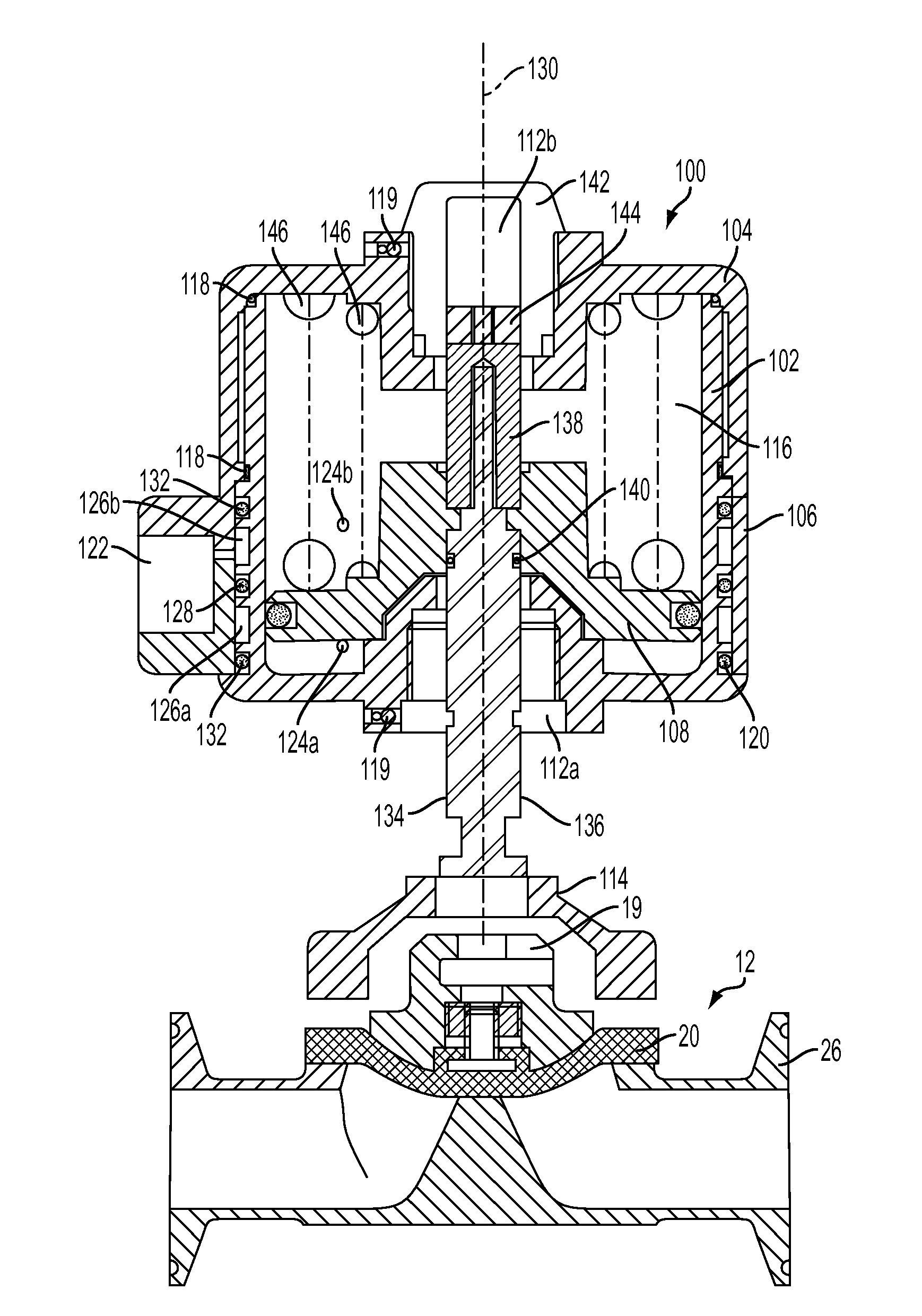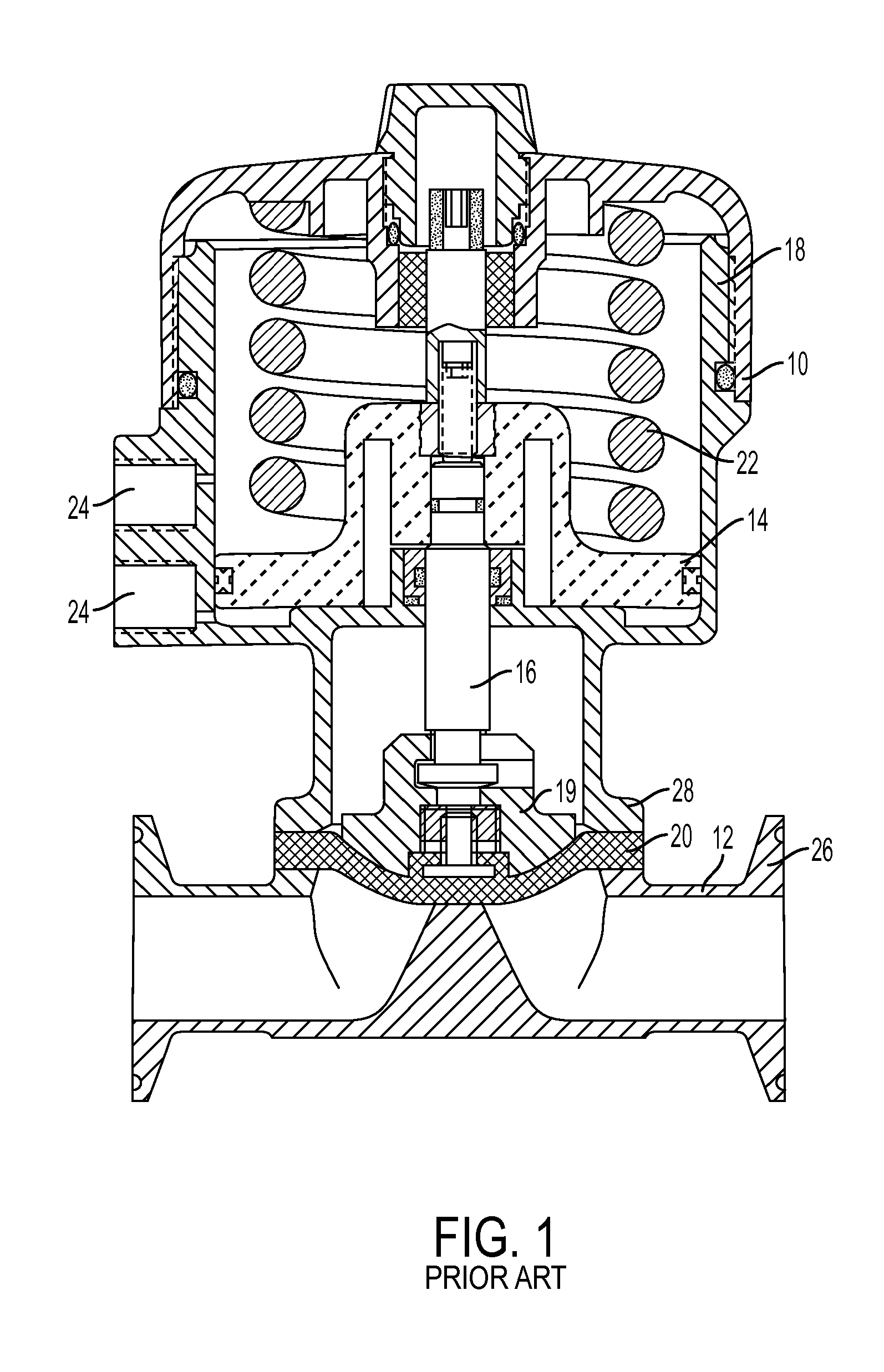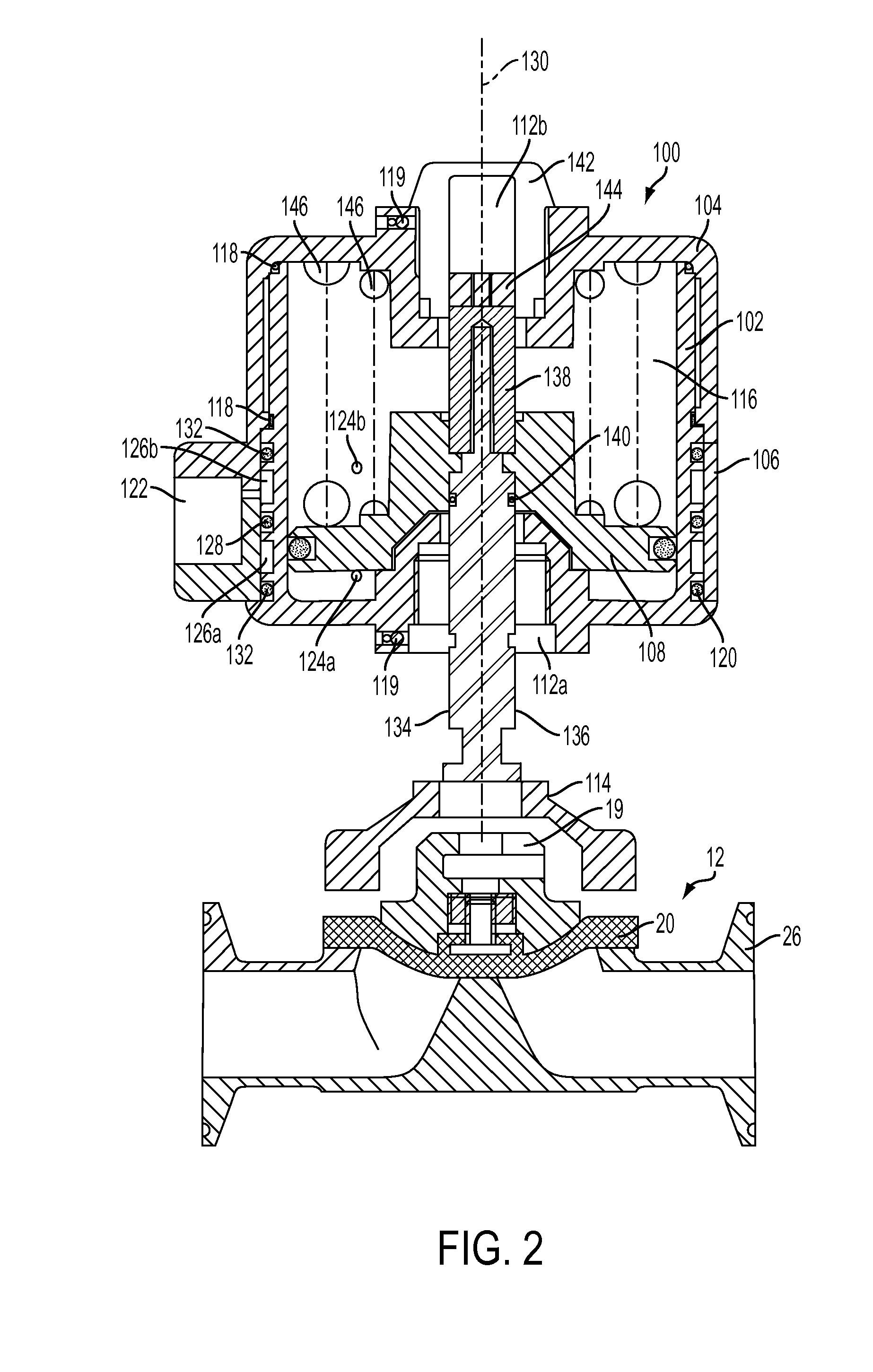Actuator for operating valves such as diaphragm valves
- Summary
- Abstract
- Description
- Claims
- Application Information
AI Technical Summary
Benefits of technology
Problems solved by technology
Method used
Image
Examples
Embodiment Construction
[0030]Referring first to FIGS. 2 and 3, an actuator 100 that is designed to operate a diaphragm valve 12 is shown. The actuator is made of a housing 102, a cap 104, a swivel ring 106 and a piston 108. The housing 102 has a cylindrical shape, open at one end and substantially closed at the other end. The substantially closed end is equipped with a connecting interface 112a that is designed to connect the actuator 100 to the valve 12, either directly or, as is the case in the present example, through the use of a bonnet 114. The housing may be made of different materials such as metals or plastics.
[0031]The cap 104 substantially covers the open end of the housing 102. It may also cover a first portion of the exterior of the housing 102. The cap 104 and the housing 102 define a substantially enclosed space 116 inside the housing 102. The cap 104 is sealed against the housing 102 with the use of cap O-rings 118 to prevent air from leaking out of the actuator 100.
[0032]Optionally, the ca...
PUM
 Login to View More
Login to View More Abstract
Description
Claims
Application Information
 Login to View More
Login to View More - R&D
- Intellectual Property
- Life Sciences
- Materials
- Tech Scout
- Unparalleled Data Quality
- Higher Quality Content
- 60% Fewer Hallucinations
Browse by: Latest US Patents, China's latest patents, Technical Efficacy Thesaurus, Application Domain, Technology Topic, Popular Technical Reports.
© 2025 PatSnap. All rights reserved.Legal|Privacy policy|Modern Slavery Act Transparency Statement|Sitemap|About US| Contact US: help@patsnap.com



